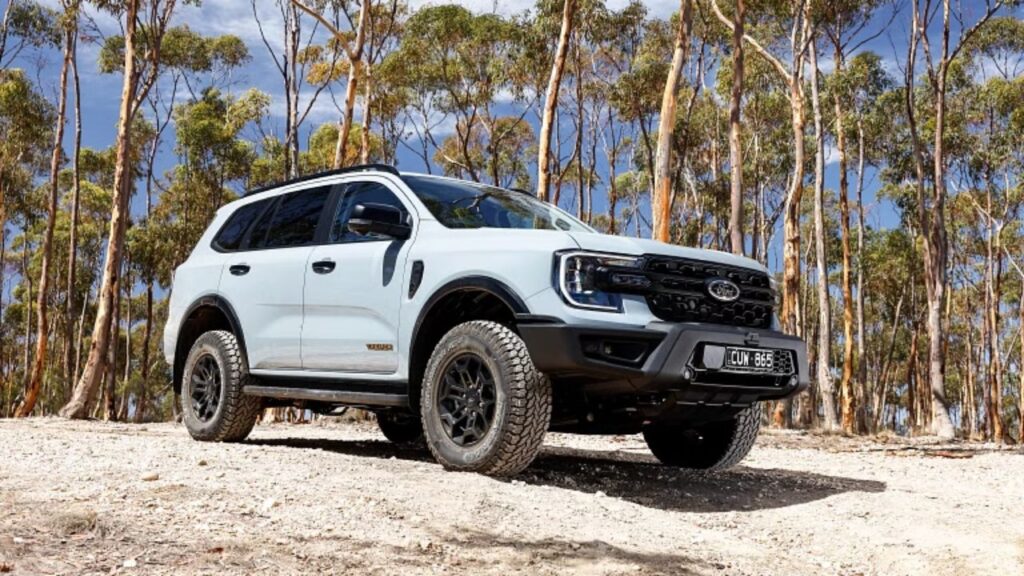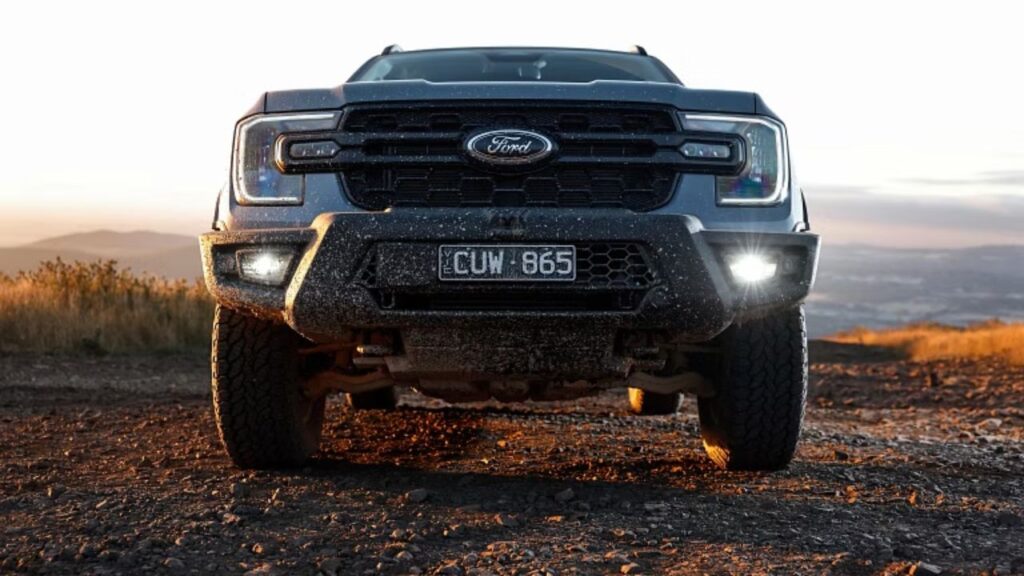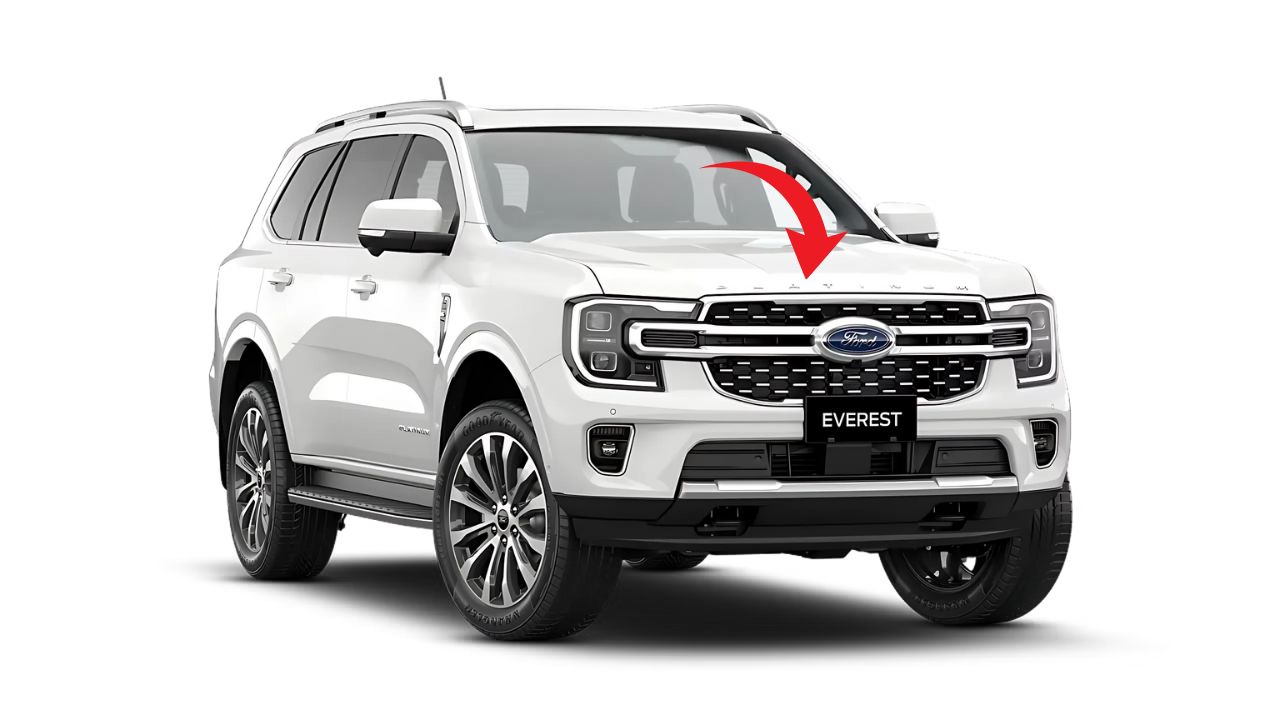Adventure families need vehicles that excel both on weekend trails and school pickup duties. The Ford Everest attempts to bridge this gap between rugged capability and daily usability.
This American SUV brings serious off-road credentials to the competitive seven-seat market. However, success depends on balancing trail performance with family-friendly features and reasonable running costs.

Pricing Strategy and Market Positioning
Ford has positioned the Everest as a premium alternative to established players. The pricing reflects this strategy while attempting to justify higher costs through superior capability and features.
Variant Pricing Structure
Entry-level models start at competitive price points for the segment. Base configurations include essential off-road features without luxury additions that inflate monthly payments.
Mid-range variants offer the best balance between capability and comfort features. These configurations typically provide optimal value for families seeking adventure-ready transportation.
Top-specification models compete directly with luxury SUVs from premium brands. Advanced technology and comfort features justify the investment for buyers prioritizing refinement.
Value Comparison Analysis
The Everest costs more than some established competitors but includes more standard equipment. Four-wheel drive capability comes standard across all variants, unlike some rivals.
Service costs and parts availability affect long-term ownership expenses significantly. Ford’s extensive dealer network provides advantages in regional and remote areas.
Resale values remain strong for well-maintained examples with service history. The brand recognition and capability reputation support used vehicle pricing.
Engine Performance Capabilities
Powertrain selection directly impacts both capability and running costs. Ford offers engine options that cater to different priorities and usage patterns.
Diesel Engine Specifications
The turbocharged diesel delivers substantial torque for towing and hill climbing. Low-end grunt suits off-road applications where immediate response matters most.
Power delivery remains smooth throughout the rev range without sudden surges. This predictable characteristic helps maintain traction during challenging off-road situations.
Engine refinement has improved through better sound dampening and vibration control. Highway cruising becomes more pleasant when mechanical noise doesn’t dominate conversations.
Petrol Engine Alternative
The petrol V6 option provides different performance characteristics for specific applications. Higher-revving nature suits highway driving and lighter towing duties effectively.
Fuel availability considerations favor petrol in remote areas where diesel supply might be limited. This factor influences vehicle choice for serious adventure travel.
Initial purchase costs typically favor petrol variants over diesel equivalents. However, fuel consumption differences affect long-term operating expenses significantly.
Off-Road Capability Excellence
The Everest’s reputation rests heavily on its ability to handle challenging terrain. Ford engineers prioritized capability development to differentiate from road-focused competitors.
Four-Wheel Drive System
The advanced four-wheel drive system includes multiple terrain modes for different conditions. Sand, mud, rock, and snow settings optimize vehicle behavior automatically.
Low-range gearing provides crawling speeds for technical sections requiring precise control. The gear reduction allows confident navigation of steep descents and rock gardens.
Electronic differential controls distribute power to wheels with the best available traction. This system prevents individual wheels from spinning uselessly in challenging conditions.
Suspension and Ground Clearance
Independent front suspension provides excellent ride quality on highways and rough trails. The design accommodates significant wheel travel for obstacle navigation.
Solid rear axle construction delivers durability and articulation needed for serious off-roading. This proven approach handles impacts and stress better than independent alternatives.
Ground clearance exceeds most competitors, allowing navigation over larger obstacles safely. Approach and departure angles accommodate steep terrain without body damage.
Protection and Recovery Features
Skid plates protect vital components from rock impacts during trail riding. Engine, transmission, and fuel tank protection prevent expensive damage from careless navigation.
Recovery points provide secure attachment for winching operations when stuck. Front and rear mounting points handle substantial loads without structural damage.
Hill descent control maintains safe speeds on steep declines automatically. This feature reduces driver fatigue and brake wear during extended descents.
Family-Friendly Interior Design
Adventure families need practical interiors that accommodate both daily use and outdoor activities. The Everest attempts to balance ruggedness with comfort and convenience.
Seating Configuration Options
Seven-seat configurations provide flexibility for growing families and passenger hauling duties. Third-row seating suits children better than adults for extended journeys.
Five-seat variants maximize cargo space for adventure gear and weekend equipment. Families with fewer children often prefer the additional storage capacity.
Seat materials balance durability with comfort across different trim levels. Higher-spec models include leather appointments while base versions use hardwearing cloth.
Storage and Practicality
Interior storage solutions accommodate family necessities and adventure equipment effectively. Cup holders, door pockets, and console spaces actually fit real-world items.
Cargo area configurations adapt to varying load requirements through folding seats. Maximum cargo capacity rivals dedicated wagon alternatives.
Loading height remains reasonable for elderly passengers and heavy items. The tailgate opening provides adequate access without requiring excessive lifting.
Technology Integration and Features
Modern families expect comprehensive technology packages in premium SUVs. Ford has equipped the Everest with competitive systems while maintaining user-friendly operation.
Infotainment System Capabilities
The large touchscreen interface provides clear graphics and responsive operation. Menu structures follow logical patterns that reduce learning curves for new users.
Smartphone integration works seamlessly with both Android and iPhone devices. Wireless connectivity eliminates cable clutter while maintaining stable connections.
Navigation systems include offline map storage for remote area adventures. This capability proves invaluable when cellular coverage becomes unreliable or unavailable.
Safety Technology Suite
Comprehensive safety systems include automatic emergency braking and collision warnings. These features help prevent accidents during both city driving and highway travel.
Blind spot monitoring with trailer coverage enhances towing safety significantly. The system accounts for trailer presence and adjusts warning zones appropriately.
Adaptive cruise control maintains safe following distances automatically during highway driving. This feature reduces driver fatigue on long adventure journeys.
Fuel Efficiency Considerations
Rising fuel costs make efficiency a critical factor for adventure families. The Everest’s consumption figures affect both daily operating costs and adventure travel budgets.
Real-World Consumption Figures
Highway driving typically yields consumption around 9-10L/100km for diesel variants. These figures assume reasonable speeds and proper tire pressures for optimal efficiency.
City driving increases consumption to 12-13L/100km in stop-and-go conditions. Urban commuting represents the least efficient operating scenario for large SUVs.
Off-road driving significantly increases fuel consumption due to challenging conditions. Trail riding, sand driving, and rock crawling can double normal consumption rates.
Towing Impact on Efficiency
Heavy trailer towing increases fuel consumption substantially compared to unladen driving. Expect 15-18L/100km when pulling maximum trailer weights on highways.
Aerodynamic drag from trailers affects consumption more than weight alone. Boat trailers create less drag than large caravans or equipment haulers.
Mountain driving while towing presents the worst-case scenario for fuel consumption. Engine load and frequent gear changes maximize fuel usage rates.
Towing and Payload Specifications
Adventure families often need substantial towing capacity for boats, caravans, and equipment trailers. The Everest delivers competitive capability for its size and class.
Maximum Towing Capacity
Braked trailer limits reach competitive levels for the seven-seat SUV segment. Properly equipped variants handle large caravans and boat combinations effectively.
Tongue weight limitations require careful load distribution for maximum capacity. Proper trailer loading techniques maximize capability while maintaining vehicle stability.
Cooling systems handle sustained towing loads without overheating concerns. Extended mountain climbs in hot weather don’t stress powertrain components excessively.
Payload Specifications
Maximum payload capacity accommodates typical family loads plus adventure gear. Camping equipment, sports gear, and luggage fit within legal weight limits.
Load distribution affects handling characteristics significantly with maximum payloads. Proper loading techniques maintain vehicle stability and tire wear patterns.
Roof loading capacity supports adventure equipment like kayaks and mountain bikes. Integrated roof rails simplify accessory mounting for outdoor enthusiasts.
Reliability and Maintenance Considerations
Long-term satisfaction depends heavily on reliability and reasonable maintenance costs. Ford’s reputation varies by market, affecting buyer confidence and resale values.
Mechanical Reliability Record
Engine reliability has improved through refined designs and better quality control. However, some complex systems still present potential failure points.
Transmission durability varies by application and maintenance quality significantly. Proper servicing intervals prevent premature failures in most cases.
Electronic system complexity increases potential problems compared to simpler alternatives. However, comprehensive warranties provide protection during critical early years.
Service Network and Costs
Ford’s extensive dealer network ensures service availability in most regions. Trained technicians understand the Everest and can perform repairs efficiently.
Parts pricing reflects premium positioning but remains competitive within the segment. Common maintenance items cost similarly to other mainstream premium SUVs.
Warranty coverage provides comprehensive protection for typical ownership periods. The terms match or exceed industry standards for peace of mind.
Competitive Analysis
The seven-seat SUV segment includes strong competitors from various manufacturers. Understanding comparative strengths helps buyers make informed decisions.
Direct Competitor Comparison
Toyota Prado offers superior reliability reputation but costs more to purchase. The feature advantage doesn’t always justify the significant price premium.
Isuzu MU-X provides excellent value but lacks some refinement found in the Everest. Interior materials and technology favor Ford’s offering.
Mitsubishi Pajero Sport competes on price but trails in capability and features. The Everest justifies higher costs through superior performance and equipment.
Unique Selling Propositions
Advanced four-wheel drive systems provide capability advantages over some competitors. The terrain management features simplify off-road driving for inexperienced users.
Interior space and comfort exceed many rivals in the price range. Families benefit from superior passenger and cargo accommodation.
Technology integration matches or exceeds premium competitors while maintaining competitive pricing. The feature content provides good value for money.
Best Use Case Scenarios
Different families have varying needs that affect optimal vehicle selection. Understanding specific requirements helps identify ideal applications for the Everest.
Adventure Family Applications

Families regularly venturing off-road will appreciate the advanced capability systems. Weekend camping, beach driving, and trail exploration suit the Everest perfectly.
Towing requirements for boats, caravans, or equipment trailers justify the capability investment. The substantial towing capacity handles most recreational applications effectively.
Regional travel in remote areas benefits from the rugged construction and reliability. The Everest handles rough roads and challenging conditions confidently.
Daily Driving Considerations
Urban commuting presents the least favorable scenario for large SUVs generally. Fuel consumption and parking challenges affect daily usability significantly.
School runs and family transportation duties suit the seven-seat configuration well. The practical interior accommodates typical family requirements effectively.
Highway cruising comfort makes long-distance travel pleasant for passengers. The refined ride quality reduces fatigue during extended journeys.
Future Ownership Projections
Understanding likely ownership experiences helps buyers make informed decisions. The Everest’s characteristics suggest specific strengths and potential challenges.
Resale values should remain strong based on capability and brand recognition. Well-maintained examples with service history typically hold value effectively.
Operating costs will reflect fuel consumption and maintenance requirements significantly. Budget planning should account for higher running expenses than smaller alternatives.
Capability advantages may become more valuable as adventure travel popularity increases. Families seeking genuine off-road ability will appreciate the investment long-term.
Purchase Recommendations
Different buyers have varying priorities that affect optimal Everest variant selection. Understanding personal needs helps identify the best configuration and timing.
Base models provide excellent capability at competitive price points for budget-conscious buyers. Essential off-road features come standard without unnecessary luxury additions.
Mid-level trims offer the best balance between features and value for most families. These configurations include comfort and convenience features that enhance daily usability.
Top variants compete with luxury SUVs while maintaining capability focus. Buyers seeking

